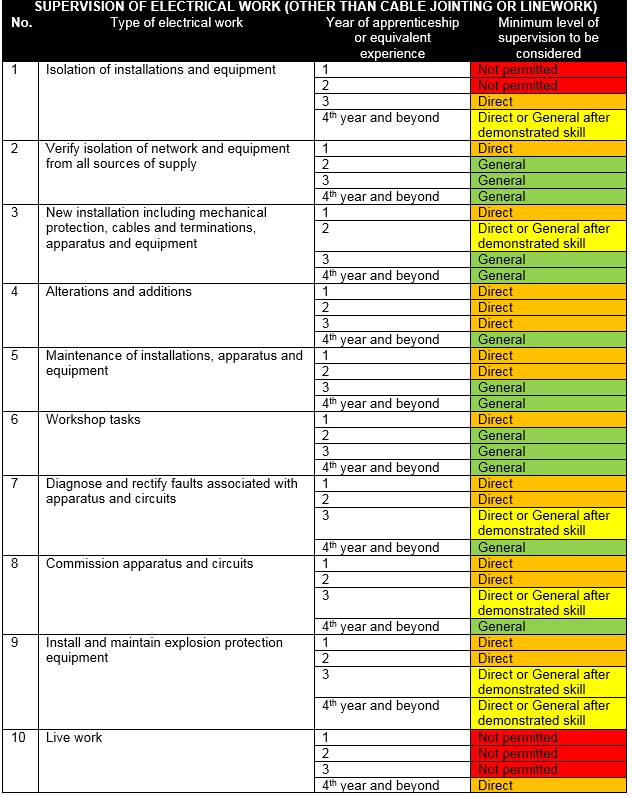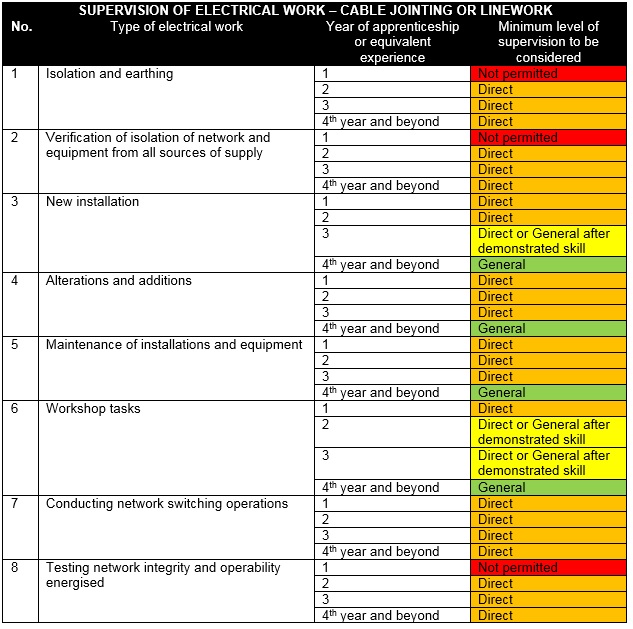New Supervision Requirements in Tasmania
On 7 August 2019, the Occupational Licensing (Supervision of Prescribed Work) Code of Practice 2019 (the Code) came into effect in Tasmania. The code sets the minimum standards for the supervision of those required to be supervised in the performance of prescribed work. Persons who must be supervised include the following:
- an apprentice;
- a person undergoing an approved course of training without a contract of training;
- a person who may be licensed who has not previously proven themselves to the supervisor that they are competent to undertake the relevant task; and
- a person employed to assist licence holders in carrying out the relevant works.
Pursuant to the Code, there are two forms of supervision that may be applicable:
- Direct supervision, meaning supervision of a supervised person performing the works set out in the table at the end of this article, which shall include:
- being physically in the immediate presence of the supervised person;
- visually observing the supervised person; and
- remaining within earshot of the supervised person; or
- General supervision, meaning supervision of a supervised person performing works, as set out in the table below, which is necessary to ensure the discharge of the supervisor’s duties by:
- being physically present with the supervised person; and
- observing the supervised person’s works.
Supervisor’s Duty for Supervision
Supervisors must:
- apply direct or general supervision, or a mixture of the two where it is appropriate to do so;
- give consideration to the type of prescribed work to be undertaken;
- assume (until the contrary is apparent) that the supervised person:
- has no or minimal competence required technically to perform the work;
- has no or limited awareness of the risks associated with performing prescribed work; and
- requires direct supervision at all times and the undivided attention of the supervisor;
- consider the tasks set out in the table below, as well as all other tasks, to be done by the supervised person in performing the prescribed work;
- make a conscious appraisal of the competence of the supervised person based on their previous experience and progress in their approved training course;
- consider the suitability, efficacy and safety of the tools, materials and equipment required for the work;
- perform any isolation, de-energisation, disconnection, de-commissioning or deactivating of the installation that may be required;
- determine the level of supervision required so that the work is carried out safely and in compliance with the Code;
- instruct the supervised person to ensure that he or she understands:
- the tasks required;
- the application of the Code; and
- the risks inherent in that work and how to control and mitigate those risks;
- ensure that the supervisor thoroughly checks the work and the work is in compliance with the Code; and
- ensure any testing, activating or commissioning by the supervised person is carried out under the direct supervision of the supervisor.
Ratios
Nominated managers must appoint a person responsible for the supervision of work carried out by a supervised person. That person may be either himself/herself or an alternate person. Where a nominated manager has failed to appoint a supervisor, the holder of a contractor’s licence must appoint the supervisor.
A nominated manager of a holder of a licence under the Occupational Licensing Act 2005 who is responsible for a supervised person, must ensure the ratio of supervisors to supervised persons is one to one. This ratio may be varied, after completion of a formal risk assessment, which must include consideration of the:
- competence and experience of the supervisor;
- nature of the work being undertaken;
- hazards associated with the work;
- competence of the supervised person; and
- risks associated with the work environment where the work is being undertaken.
How to manage risk
As a person who is involved in the electrical contracting industry, you should:
- ensure that all of your employees (including apprentices and unlicensed tradesmen) are aware of their obligations pursuant to the Code;
- train all employees in carrying out formal risk assessments; and
- ensure that it is clearly communicated to all employees as to who will be acting as a supervisor in accordance with the Code.
Supervision of particular work


Note:
Supervised persons are not to work (unless a formal risk assessment identifies otherwise):
- on or near exposed energised high voltage conductor, apparatus and/or accessories; or
- where there is a risk of coming into contact with any exposed energised low voltage electrical part.
A copy of the Code can be accessed by clicking here.
As a NECA member, you can access expert HR and IR advice. For more information, please contact NECA Legal’s Senior Associate, Lauren Howe, on 1300 361 099 or email lauren.howe@neca.asn.au.














